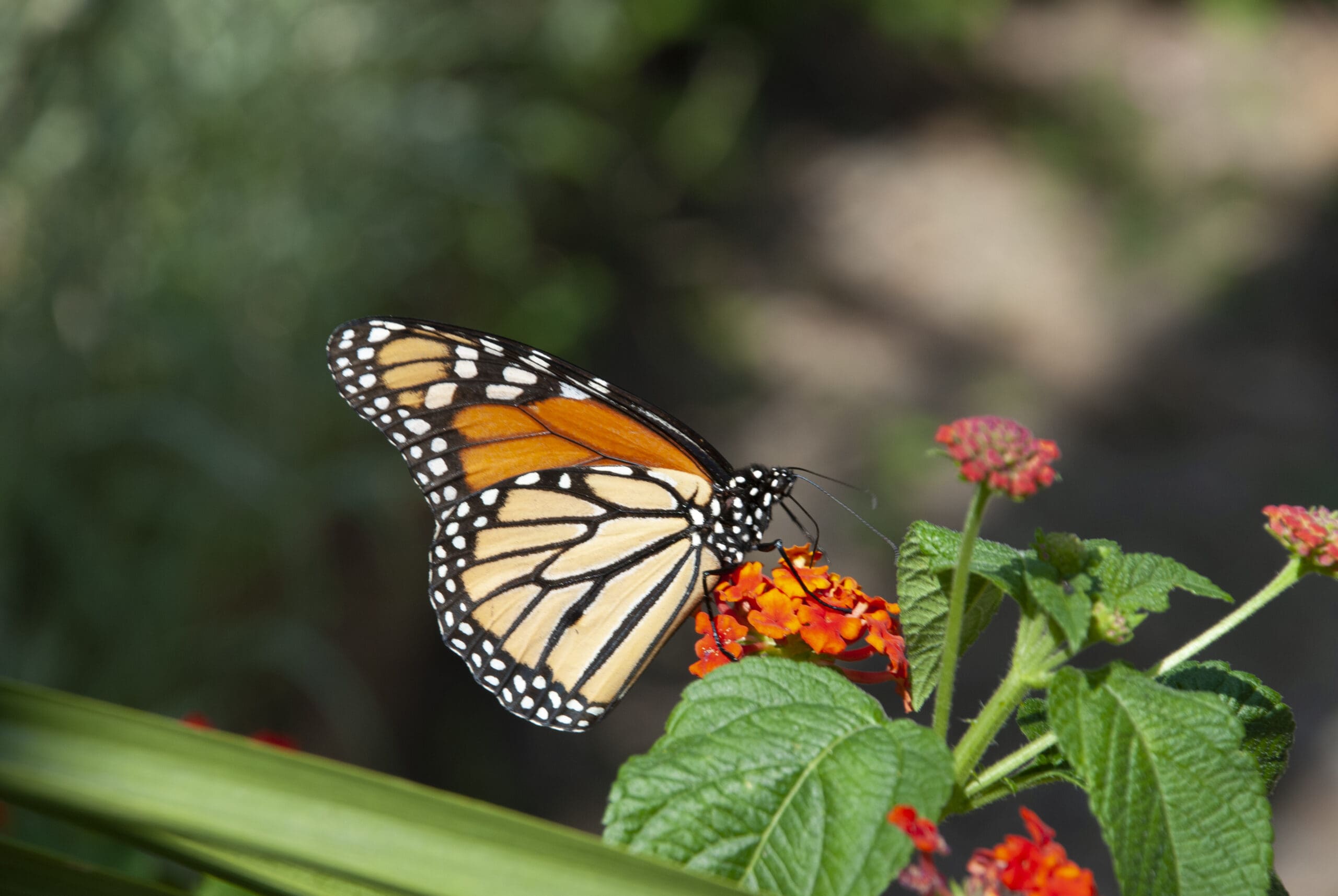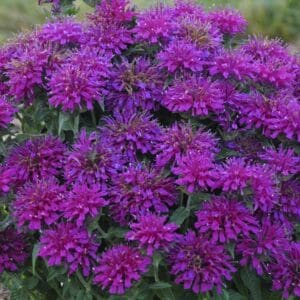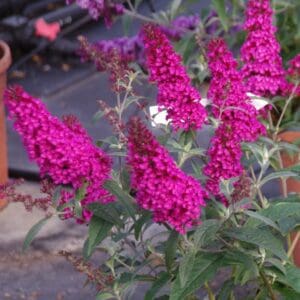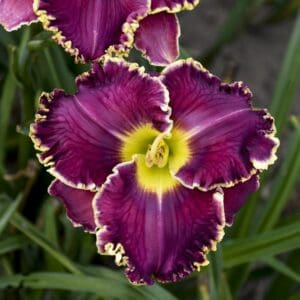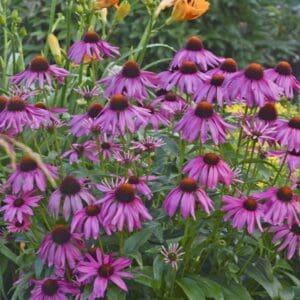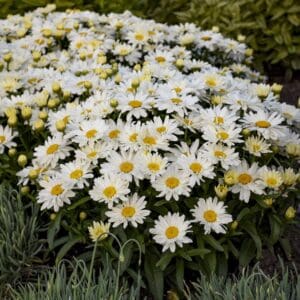
One of the pleasures I enjoy about a garden is watching all the wildlife that comes to visit. I am particularly fond of those little acrobats of the sky: butterflies. They really bring the landscape to life as they flutter from flower to flower. Luring butterflies to a garden is really quite simple, and the plants that attract them also add a lot of beauty.
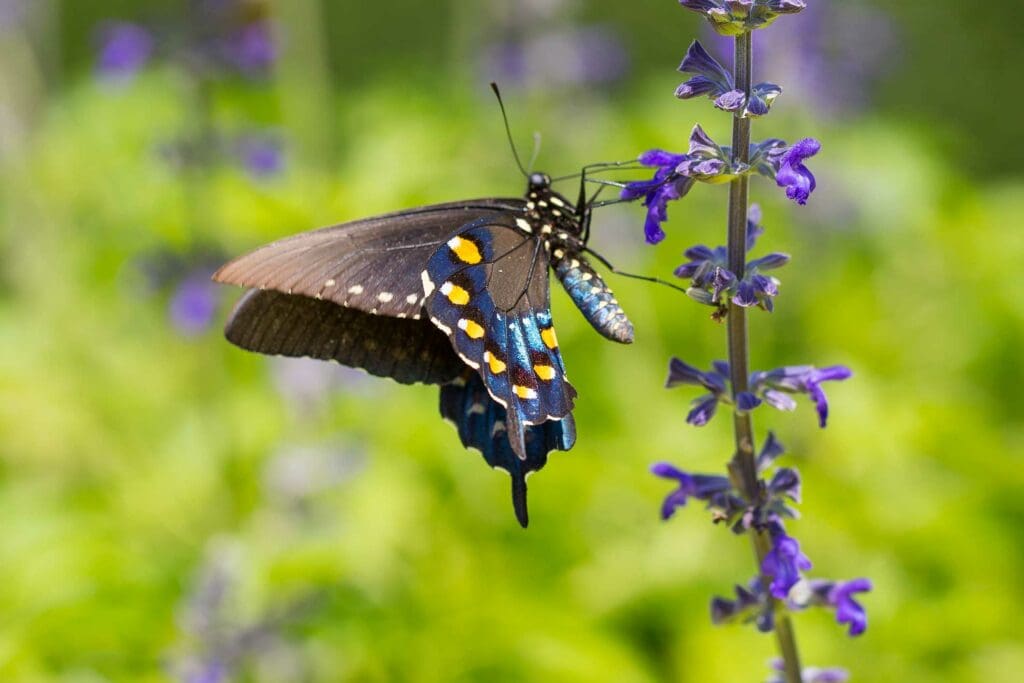
Plant Selection If you want to increase the population of these showy little guys around your place, you need to provide food for two different parts of their life cycle, as larva or caterpillars and as adult butterflies. Plants suited for the larva stage are commonly referred to as host plants and adult butterflies feed on nectar plants.
When it comes to host plants different varieties of butterfly larva have specific requirements. For instance, the Painted Lady butterfly larva likes hollyhocks and sunflowers, but the Monarch prefers milkweed. Trying to appeal to every butterfly would require a large group of plants and to be honest, some of them are weedy. So narrow your selections to the ones that benefit the greatest number of larva. Host plants that feed several kinds of butterfly larva are parsley, milkweed, and fennel. Others that are a little showier include Queen Anne’s lace, false indigo, passionflower, asters, and various kinds of sedum.
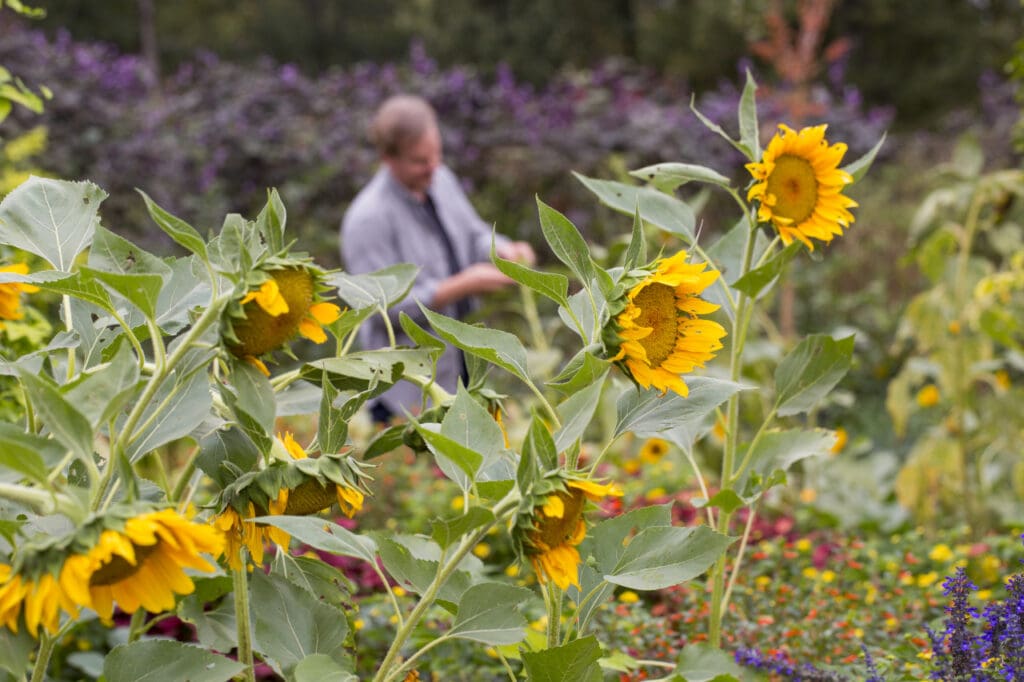
Now once the adult butterfly emerges from the chrysalis it needs nectar-producing plants to dine on. There is an extensive list of plants to choose from, but they seem to be especially attracted to purple, pink, yellow, and white flowers. To make it easy for the butterfly to spot your offerings, plant in drifts of a single type of flower rather than a mix of different colors.
Be sure to arrange it so that something is in bloom throughout the growing season and especially in late summer when butterflies are most active. Including some of their favorite annuals will ensure a steady supply of nectar. Butterflies need nectar sources. They use a straw-like structure called a proboscis to extract nectar from the flowers. Including some of their favorite annuals will ensure a steady supply of nectar.
Pesticide Use One of the most important things you can do is make your garden butterfly-friendly is to limit your use of pesticides. Choose earth-friendly options such as insecticidal soap and spot treat problems rather than spraying the entire garden.
Butterfly Sun Deck Butterflies enjoy soaking up the sun. You’ll often see them sunbathing. They also appreciate a shallow pool of water. This simple project will provide a place for butterflies to enjoy both.
Choose a location in full sun that is sheltered from winds. Dig a medium-sized, shallow hole. To retain water, line the hole with plastic or place a shallow bowl in the hole. Place a brick or large flat stone in the center of the hole. Fill in around the brick with gravel. Add water.
Over the course of the summer keep the gravel moist. Slices of overripe fruit will also attract butterflies to the area.
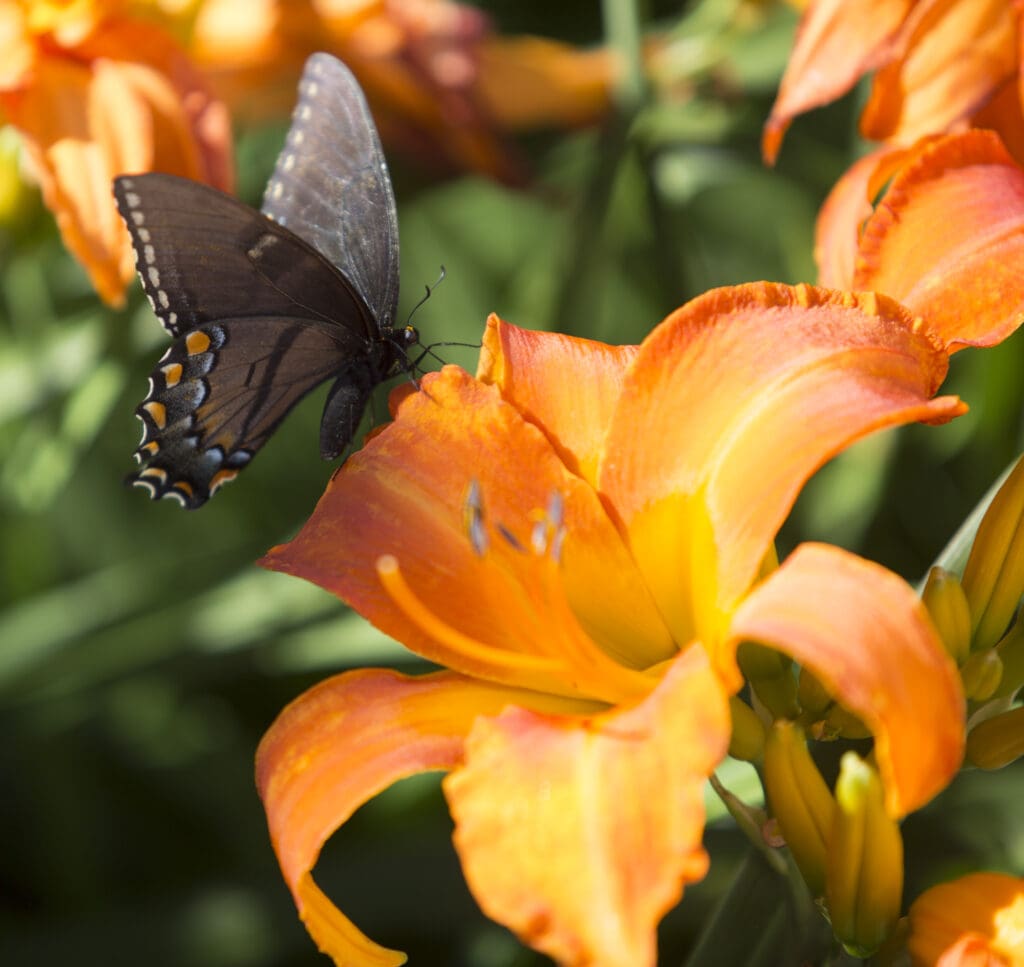
Butterfly Nectar Plants There is an extensive list of butterfly-attracting plants.
- Ageratum (Ageratum)
- Aster (Aster species)
- Bee-balm (Monarda didyma)
- Black-eyed susan (Rudbeckia species)
- Boltonia (Boltonia asteroides)
- Butterfly bush (Buddleia davidii)
- Butterfly weed (Asclepias tuberosa)
- Chives (Allium schoenoprasum)
- Coreopsis (Coreopsis species)
- Daylily (Hemerocallis species)
- False Indigo (Baptisia australis)
- Gayfeather (Liatris species)
- Goldenrod (Solidago species)
- Hibiscus (Hibiscus species)
- Hollyhock (Althaea rosea)
- Joe-pye Weed (Eupatorium fistulosum)
- Lantana (Lantana camara, L. species)
- Lobelia (Lobelia cardinalis)
- Mexican Sage (Salvia leucantha)
- Milkweed (Asclepias species)
- Passion Flower (Passiflora species)
- Phlox (Phlox paniculata)
- Purple Coneflower (Echinacea purpurea)
- Sedum (Sedum species)
- Shasta Daisy (Leucanthemum superbum)
- Yarrow (Achillea species)
Some of my favorites are:

